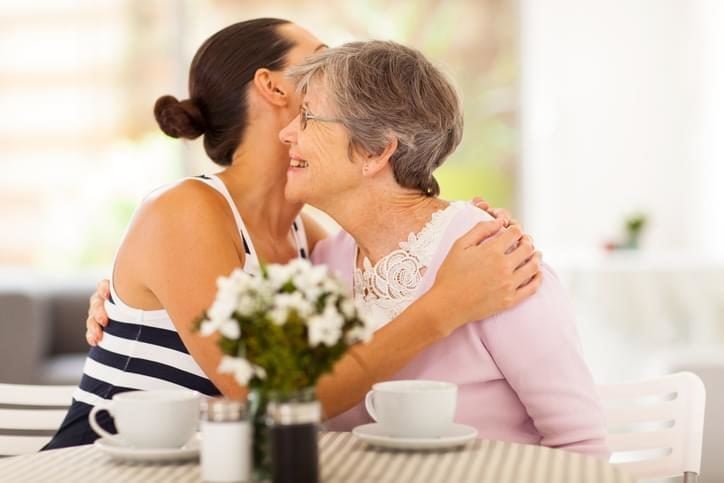Writer Ambra Sancin shares how her life changed when she became a carer for her mother.
Many Australians will take on caregiver roles at some point in their lives. Mine came three-and-a-half years ago and it’s been challenging (but ultimately rewarding) on a number of levels.
At 90, mum had a number of medical conditions including hypertension, atrial fibrillation (irregular heart beat), macular degeneration – as well as the less dramatic osteoporosis, cataracts and high cholesterol. She was ticking along fine with the help of a cocktail of medications, then BAM! She suffered an intracranial haemorrhage (bleeding within the skull) and was rushed to hospital.
After the stroke
I was at my mother’s place when the stroke occurred. Had I not been there to get immediate medical attention, things would have been much worse. The left side of her body was weak but she suffered no significant paralysis and was discharged into my care three weeks later.
Mum had been a widow for 25 years and remained in the family home after dad died. I’d already started working part-time before her stroke to assist with shopping, specialists’ appointments and the occasional bit of correspondence beyond her ‘English as a second language’ abilities. But now this regular work/life came to a halt and I had to forego a planned large-scale project in order to concentrate on mum’s recuperation.
I moved in with her for one month as carer and chief cat wrangler (having already done a daily commute between my place and hers while she was hospitalised to tend to Their Royal Highnesses’ needs!). This was followed by three weeks of almost daily visits to assist with household and administrative chores, appointments with neurologists and cardiologists and supervising in-house physiotherapy sessions.
As an only child, the responsibility of caring for my mother fell to me. Friends offered to help, but all held fulltime jobs. I didn’t know when I’d be able to work regularly again – the physical and emotional strain at times leaving me exhausted and directionless. Mum was getting better, but still appeared weak: without a crystal ball I had no idea how the pathway of her recovery and my future income stream would co-exist. And at her age – even with a good prognosis – she was probably not going to be the same person physically or mentally that she’d been pre-stroke.
A little help
Approximately 2.8 million Australians are unpaid carers for loved ones and, depending on their personal circumstances, many will seek financial support or services from the government and non-government sector. Some will also need to discuss big life decisions – such as power of attorney – with care receivers and family.
Carers in circumstances similar to mine can apply for either a Carer Payment (for those who provide constant care in the home) or a Carer Allowance (for those who provide a lower level of assistance and care in the home). The former is means-tested; the latter a modest income supplement and eligibility criteria apply to both. The Australian Government’s Carer Gateway portal contains further information.
Planning ahead
I now work from home as flexibility is key and I’ve reduced my workload to accommodate my caregiver’s role. I’ve worked in the cultural sector for thirty years and am fortunate to have a solid network of contacts, allowing me to continue working in a creative field.
But still, I’ve had to look closely at my finances and seek advice with forward planning due to my reduced earning capacity. I’m certainly not at retirement age, but with my current circumstances, I’m paying special attention to my superannuation and how best to manage my savings.
The one positive in all this is the personal satisfaction of realising what a strong person my mother is and how well she’s coped with the recovery process. I’ve also started a personal blog to keep notes of family anecdotes and stories that mum can share with me while she’s still able to remember details. Unfortunately, the blog doesn’t generate any income. It’s a labour of love.
If you’re a carer, learn more about how a financial plan can help you plan for the future here.
Sources
https://www.carergateway.gov.au/carers-payments-explained
http://www.carersaustralia.com.au/about-carers/statistics/
